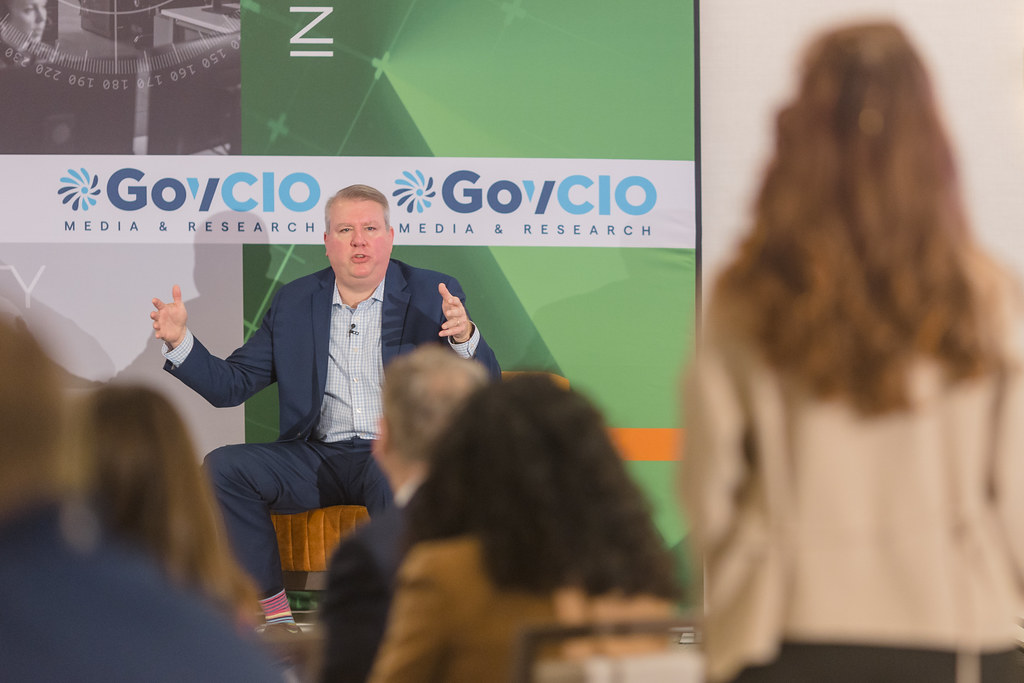How VA’s Agile Center of Excellence is Transforming Software Development
The agency’s product line management vision is seeing value with new efforts driving culture change.

The Department of Veterans Affairs has been on a modernization journey toward DevSecOps and agile software development. A key part of this effort has been through its Agile Center of Excellence (ACOE) the agency stood up in 2018 to help overcome the large undertaking of changing the culture of traditional software development.
Nestled within the VA Office of Information and Technology (OIT), the center was designed to help empower products and inspire a culture of continuous improvement in its DevSecOps and product line management (PLM) transformation.
The ACOE offers expert coaching and tailored training for teams to optimize the way they work together to deliver value. Since its inception, VA has expanded the center’s organizational role to include teams that are dedicated to advancing metrics, analytics, dashboarding, technical solutions and, of course, product line management.
“Our top priorities this year focus on transformation and building transparency,” the center’s chief of staff, Brooke Jordan, told GovCIO Media & Research. “Empowering teams and individuals with the knowledge and behaviors necessary to thrive in an ever-changing landscape and advancing product line management — moving us closer to a more mature DevOps culture. We’re also looking to enhance the way we use data to make more informed decisions.”
Jordan said the center is creating products and services that enable proactive and intentional solutions. When it comes to PLM, Jordan’s team is focusing on breaking down barriers that have historically existed between development, security and operations teams.
“We started organizing around product lines to build long-lived teams and streamline value delivery, a monumental shift from the traditional project-driven structure. We simplified the foundation, expedited communication, and collaborated with the customer to give teams the time and autonomy to innovate,” Jordan said. “Building compound product knowledge, meaningful relationships and shared accountability for security is helping us focus on outcomes across the life of the product. We are all coming to the table earlier so we can consistently deliver safer products that delight our end user faster.”
OIT’s PLM implementation stays true to the Agile principles it was built to evangelize, delivering simple systems that iteratively actualize change, Jordan said. The effort has been through multiple maturity levels.
The center is currently staging for PLM level three to compound the knowledge and practices gathered during preceding levels of maturity. The first level of PLM focused on creating a lean foundation, postured for change. Level two used that trusted foundation to explore ways to improve outcomes. Teams were connected to subject matter experts through a matrixed model so they could advance their capabilities in data strategy and upskill their staff.
“When we aligned subject matter experts to the product lines, people knew exactly who to go to when they needed help with the touch of a button. This checked the box for immediate needs, like strategic communications and budget, but it also unveiled an opportunity for team members to explore, collaborate and see the bigger picture. Partnering with experts beyond their normal domain helped build both ‘T-shaped’ teams and empathy across the organization. We don’t need everyone to be an expert in everything, but we do need them armed with enough knowledge and awareness to feel empowered,” Jordan said.
Jordan’s team is also developing dashboard and reporting capabilities to enhance the organization’s approach to using data to make more informed decisions.
The dashboards utilize authoritative data, offer the opportunity to save time aggregating data and developing reports, and equip teams with the information they need to make empowered decisions. Offerings range from product scorecards that make product metrics like mean time to restore (MTTR), release cadence and lead time visible to use in stand-up meetings and sprint planning to customer-facing products like the Business Metrics Dashboard that showcases product success rates.
“In order to develop the business metric, both the customer and the product had to have a common lexicon of what success looked like,” Jordan said. “It helped increase customer collaboration, level set expectations and built trust — all essential when you are delivering high-stakes products for programs like Loan Guarantee, to make veterans more competitive in today’s housing market.”
While the ACOE works to upskill its staff in Agile, SAFe and DevSecOps, it’s also embedding principles of resiliency and adaptability to inspire what Jordan called a “growth mindset.” This is also what marks the difference between “being Agile” and “doing Agile,” she said.
As the center works to mature agility at the agency more broadly, it will maintain its focus on continuous improvement to drive transparency and transformation. Communication is key. Jordan described how the ACOE prioritizes customer feedback and facilitates upskilling sessions and communities of practice to drive collaboration and provide social learning experiences.
“We are on a mission to help teams learn, grow and optimize,” Jordan said. “We want to help teams create environments that provide the transparency, inspection and adaptability necessary to feel confident ‘failing forward.’ It is this confidence that allows creativity to thrive.”
This is a carousel with manually rotating slides. Use Next and Previous buttons to navigate or jump to a slide with the slide dots
-

DOD Software Factories Are Creating Innovation Culture
Defense leaders say the agility of software factories encourage innovation and reduce inefficiencies in critical defense programs.
3m read -

DISA HAC Director Shares Commercial Cloud Capability Progress for Indo-Pacific
Sharon Woods briefs updates on programs like Vulcan and OCONUS cloud.
8m read -

SouthCom to Assess Thunderdome, Advance CJADC2
The command looks to partnerships for building a secure joint operating environment for department-wide CJADC2 efforts.
7m read -

Air Force's Software Factory is Moving Iron Bank to Classified Levels
Platform One will move part of its DevSecOps product to secret level this year and to top secret level in 2024.
7m read




